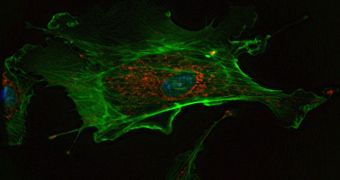A group of researchers from Washington DC managed to develop a new technology allowing them to convert stem cells in the male testes into cells capable of producing insulin in the pancreas. The achievement could lead to new drugs and therapies for conditions such as diabetes.
Using the testes of organ donors, researchers at the Georgetown University Medical Center isolated male gamets which they were then able to convert into hormone-producing cells.
In patients suffering from renal insufficiencies or diabetes, cells in the pancreas that produce insulin are damaged and diseased, which means that not enough of the chemical is produced.
As a direct result, sugar levels in the circulatory system are not properly managed, which can lead to a multitude of imbalanced and adverse side-effects, such as ulcerations, blindness and so on.
Some patients have to take insulin shots daily, in order to compensate for their bodies' lack of ability to produce the hormone, and this means a significantly reduced quality of life for them, Science News reports.
But the new investigation, details of which were presented at the annual meeting of the American Society for Cell Biology on December 12, may help out in this regard, by producing new ways of restoring full functionality to pancreatic cells.
Using this approach, the Georgetown team believes, it could soon be possible to produce the amount of insulin needed to cure diabetes. The group was led by developmental biologist Ian Gallicano.
Using the gamet cells, the group was able to revert them to an embryonic state, which allowed them to force a differentiation in the direction they wanted. The experts created beta-islet cells from the pancreas, to demonstrate that this can be done.
“If you’re a mouse and you have diabetes, you’re in good shape these days,” Gallicano says. The newly-obtained cells were able to keep mice diabetes symptom-free for a week, before insulin levels required attention again.
But the issue with treating human diabetes is quantity. In pancreatic islet cells, more than 10 percent of the chemicals they produce are accounted for by insulin. The new cells don't come close to this amount.
But progress is possible, Gallicano explains, saying that he and his team area already working on improving the production capabilities of the cells.
At this point, due to the nature of the stem cells, any potential treatment using them would only be suited for men. But the Georgetown group is already working on stem cells that could be used in females as well.

 14 DAY TRIAL //
14 DAY TRIAL //